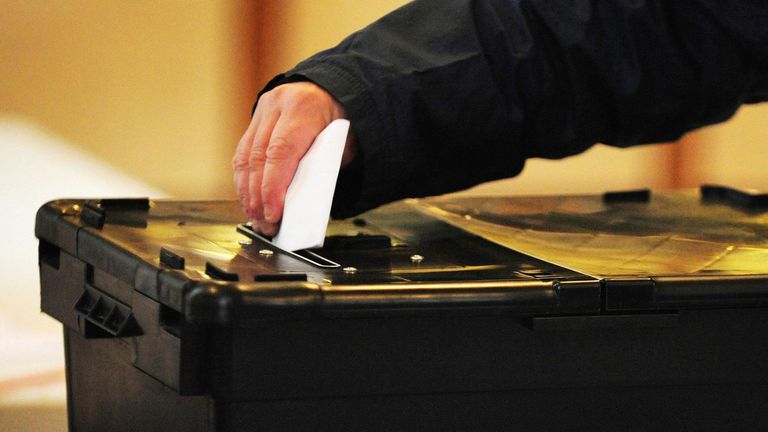Dublin Rathdown is a sea of normalcy amid this general election, and we are glad for it.
Despite being bumped up to a four-seater, it is pretty much all but assured that the three TDs who were elected in 2020 – Catherine Martin of the Greens, Neale Richmond of Fine Gael and Maeve O’Connell, who is replacing Josepha Madigan – will all be re-elected.
In this seat, the fun and excitement begins when trying to figure out who gets the fourth and final seat.
The big draw in this constituency is former Fine Gael minister Alan Shatter making an independent bid but it is another independent, Michael Fleming, that could continue the constituency’s streak of electing a popular local independent to the Dáil.
There is a novelty factor in a former high-ranking Fine Gael minister openly and loudly trashing the party he represented in the Dáil for nearly 30 years but it remains to be seen how effective Shatter’s campaign is.
As we’ve mentioned in other write-ups of Southside constituencies, there is a real chance for an independent candidate to be elected and Fleming fits the bill.
It is true that Shatter brings decades of experience to his campaign, along with name recognition, but Fleming has held elected office in more recent times and on the surface, has delivered more tangible benefits for the area.
In the local elections just gone, Fleming received 32.9% of first preferences in Glencullen-Sandyford, or 3,687 first preferences.
Fleming was elected with over twice the quota needed to win a seat in a local election; if that same fanbase turned out for him in a general election context anything could happen.
Fleming’s fellow Glencullen-Sandyford councillor, Lettie McCarthy, is making her second bid at a Dáil seat having previously appeared on the ballot for Labour in 2020.
On that occasion she received 7.5% of the vote, not enough to get elected in a three-seater but a similar performance in a four-seater (and with a good day on transfers) could make the seat competitive for Labour.
June revealed that Labour enjoys transfers from Fianna Fáil, Fine Gael and the Greens; with those three parties in the running here their transfers could provide a boost for Labour.
Of course, McCarthy will have to contend with Social Democrats candidate Sinéad Gibney and the two parties are now jostling for the same vote.
The Soc Dems didn’t run in Dublin Rathdown in 2020, with 2024 marking the first time they’ve stood in the area.
Gibney carries some name recognition having been the party’s European candidate in June; Gibney had to settle for a respectable ninth out of 23 candidates in the marathon European race.
Gibney notably received more first preferences than Sinn Féin’s second candidate Daithí Doolan (4.3% to Doolan’s 2.8%) and her transfers gave Labour’s Aodhán Ó Ríordáin the push needed to close the gap on Green MEP Ciáran Cuffe.
While that poll was Dublin-wide, it could offer a hint of where Social Democrats transfers could lay in this race.
Dublin Rathdown is the kind of constituency the Sockies could find themselves competitive in; relatively progressive, well-to-do, decent balance of pro-government and anti-government sentiment thrown in for good measure.
June revealed a path to victory for the Social Democrats all across Dublin, Northside and Southside; go after the Green vote.
Dislodging Martin will be difficult for a number of reasons, such as there being an element of a high personal vote, her being the face of the progressive wing of the party for many years and her achievements in government.
Martin received 10% of first preferences in 2016, her first election to the Dáil, and rode the Green Wave of 2020 to top the poll on 21.1%.
This year is likely to see a slight drop-off for Martin, somewhere around five to seven percent, and that much of the vote being in play has the potential to shape the race.
Speaking of political comebacks, Fianna Fáil’s Shay Brennan represents a chance for the party to pick up a seat.
Son of former Fianna Fáil heavyweight Séamus, Brennan performed decently in the 2020 general election with 10.7% of the vote but that wasn’t enough to get elected in a three-seater.
Should Brennan pull in similar numbers this time, he would be in with a strong chance of winning a seat.
Winning back a seat like Dublin Rathdown would complete Fianna Fáil’s rehabilitation following the 2011 electoral wipeout and an example of the kind of seat that threw them out in 2011 and now looks set to embrace them again.
Sinn Féin are likely to be a non-factor in this race; their candidate, Shaun Tracey, doesn’t hold a council seat so voters are, by definition, being asked to vote for the party instead of the candidate.
Sinn Féin’s over performance in the seat in 2020 (11.6% of the vote, a solid improvement on the 7.6% received in 2016) is unlikely to repeat itself in the polls barring a last-minute Sinn Féin surge.
It would take a turnaround in polling for Sinn Féin to be in with a shout this time around; but with a four-seater it opens up the door to more unpredictability.
In Ireland’s system, the “paper candidate” is a unique phenomenon; these are candidates that are put on the ballot with little chance of winning at the outset of the campaign and suddenly find themselves elected after the party performs above expectations.
To put this election race into perspective, Sinn Féin ran eight candidates in Dún Laoghaire–Rathdown in June’s local elections and failed to win a seat.
The Greens, by contrast, ran six candidates, and despite losing a huge 10.1% of first preferences compared to 2019, all six candidates were returned.
If Sinn Féin want to form a government these are the kinds of seats they need to win, and based on June’s local election results and subsequent start to the campaign that doesn’t look likely to happen on November 29.
